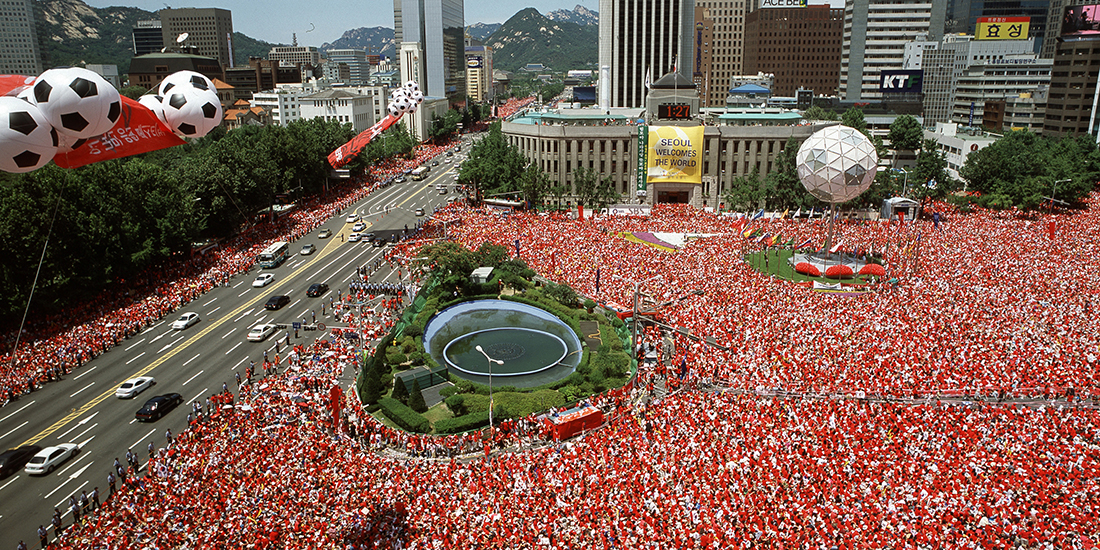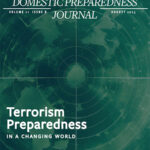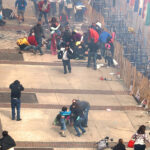The FIFA World Cup is the largest sporting event in the world. People come together for one primary purpose: the love of soccer—or football, as it is known to much of the world. The World Cup brings millions of fans and nearly half a million volunteers into the host country. In 2026, host countries—the United States (11 cities), Canada (2 cities), and Mexico (3 cities)—can expect an influx of people to their countries during the games. With that stream of fans also comes the increased risk of hostile individuals entering the country.
Sporting events have historically been high-value targets for terrorists, and there have been threats made against the World Cup in the past. Extrapolating from that data, the World Cup has the potential to be a target again in 2026. The United States will be hosting 77 of the 104 games played by the 48 teams in the tournament, making the 11 host cities potential targets for some form of terrorist activity. As such, preparedness against terrorism must become a logistical priority and a national security initiative to protect teams, fans, and residents.
The U.S. Security Landscape and Terrorism Threats
As a nation, the United States has been the target of attacks at the hands of terrorists, both foreign and domestic. With current global relations, the most-watched sporting event in the world is a potential target. A terror attack at the World Cup while on American soil would be seen by the world at large as a significant failure of the American government.
One of the biggest challenges with the World Cup is that the tournament occurs in 11 cities in the United States. Under normal circumstances, monitoring 11 major cities for possible terrorist threats would not take more than the normal resource allocation. However, 6.5 million fans are expected to attend the 2026 matches, many of whom will be foreign visitors. In addition to incoming fans, there will be potentially 3,000 foreign volunteers from around the world entering the country, if these numbers compare with the Qatar World Cup in 2022. The fact that there will be such an influx of people, specifically into the areas surrounding the venues for the matches, complicates each jurisdiction’s plans and procedures. These circumstances give potential terrorists a large pool of hard and soft targets to advance their cause on the world stage.
Terrorists could use several tactics to create chaos during a significant event. One of the most impactful, though not necessarily deadly, forms of terrorism is cyberterrorism. The damage caused by a coordinated attack on the digital infrastructure of the host cities could be as effective to a terrorist as an attack that causes mass casualties.
Lessons From Past Events
Attacks during a World Cup are not new, as attempts have been made during the last two World Cups. While stadiums are attractive targets for terrorist attacks, not many attacks succeed. For example, during the 2018 World Cup, Russia thwarted several attacks.
During the 1996 Olympics in Atlanta, Georgia, a security guard discovered a pipe bomb in Centennial Olympic Park. While many attendees were spared due to the quick actions of the guard, 111 people were still injured, and two died as a result. The motivation was not a global political one, such as the threats made against Russia in 2018, but rather was motivated by personal ideology and anti-government beliefs. A similar attack with an explosive device in 2026 cannot be ruled out, so it will be important that first responders are trained to identify suspicious items and that the public knows to report anything that might be suspicious.
Terrorists could use global or domestic issues as motivation to cause damage during the 2026 World Cup. Planning should be driven by all these factors.
Public Engagement and Community Preparedness
While planners focus on preparing for the World Cup, the public must also be ready for what the World Cup will bring to their cities. As with many emergency management tasks, planners must engage early and often with local jurisdictions and communities, particularly those in and around the host cities. Wider community preparedness is vital because some cities will host matches, while others will provide team accommodations. All these cities must make preparations, such as training for quick response, evacuation procedures for highly dense areas, and triage of injured civilians. To ensure that these communities are prepared in case of a terrorist attack, community and jurisdictional emergency plans should be made in conjunction with each jurisdiction. Public awareness of risks is critical to ensure everyone’s safety.
Threat detection will be at the forefront of security measures at each host stadium. Volunteers and regular staff will need to be trained on how to recognize a threat well before it is acted upon. Attendees also need to be educated on potential hazards, through supplements to event programs, illustrating hazards with examples. With this information, they can identify behaviors or items that could indicate danger.
Whether there is an attack or an unrelated emergency, communication during any large gathering is critical, but often encounters problems. Having use of several modes of communication between responding agencies significantly impacts the effectiveness of a response. Utilizing organizations that are already present during a typical incident increases the overall effectiveness of any emergency response. Amateur radio operators, for example, routinely operate during incidents and can bridge communication gaps during emergencies. Covering these potential gaps before they become an issue can improve the response at a stadium event.
Looking Forward
The World Cup is one of the most significant public events in the world, and safeguarding the 78 games on U.S. soil would show that the U.S. is still at the forefront of global standards. Preparing for any event takes time, planning, and the whole community, but even the best plan can fail without proper effort. The 2026 World Cup is important to fans worldwide, and safe events will demonstrate that they are all on the same side when fighting global threats.

Adam Johnson
Adam Johnson is an exercise coordinator at the Texas Division of Emergency Management, where he helps emergency management professionals prepare for the next disaster. His special interest is large-scale events, and he endeavors to ensure the safety of attendees. He has a B.A. in criminal justice and a B.A. in emergency administration and planning from the University of North Texas at which he is pursuing a master’s in emergency management and disaster science.
- Adam Johnsonhttps://www.domesticpreparedness.com/author/adam-johnson





